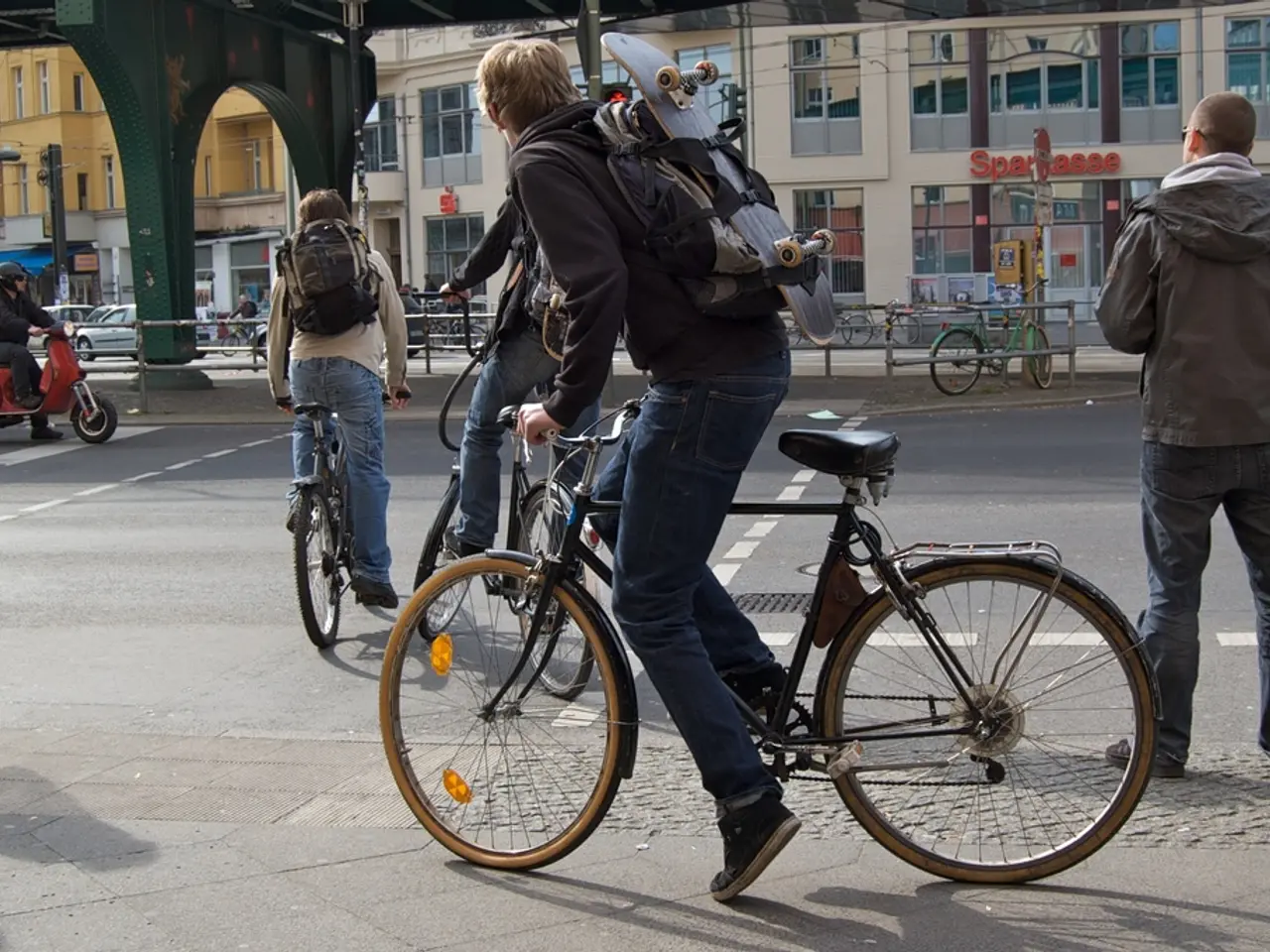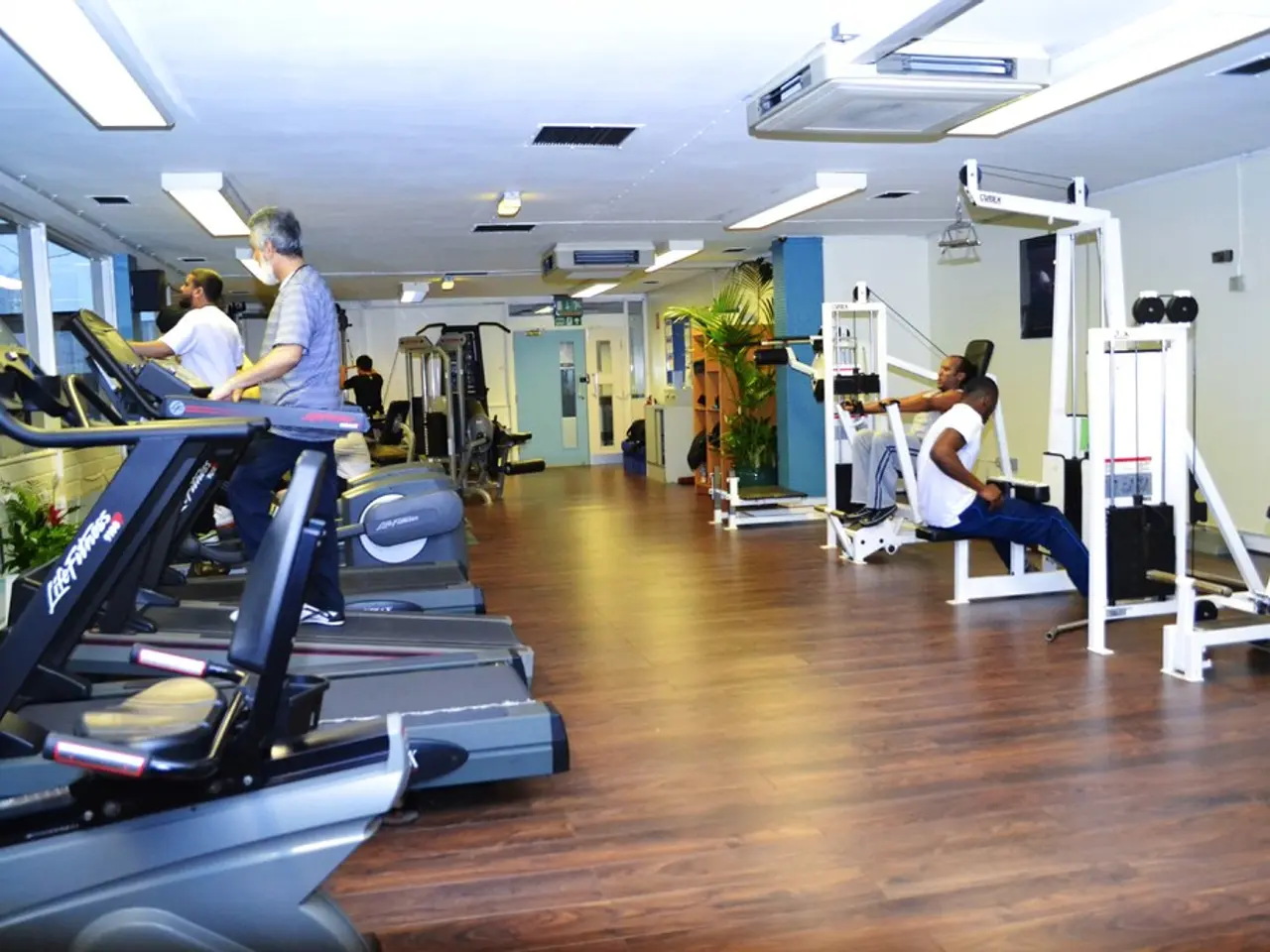Hurry Up and Cycle Commute: Strategies to Encourage Workforce Bicycling
Encouraging Cycling to Work: Beyond Financial Incentives
In an effort to promote sustainable commuting, various strategies are being employed across Europe and beyond. These approaches aim to address practical barriers, motivate individuals, and enhance convenience, creating a comprehensive framework for encouraging cycling to work.
One effective method is workplace events and culture building. Employers can host events such as "Cycle to Work Day" to promote cycling participation, raise awareness of its benefits, and create a supportive environment for cyclists. These events help inspire new and regular cyclists and emphasize the health, environmental, and wellbeing advantages of commuting by bike [1].
Education and safety campaigns are also crucial. Educating both cyclists and motorists about safe cycling practices and legal rights can reduce accidents and encourage more people to cycle. Awareness campaigns foster a culture of safety, making cycling a more attractive and less intimidating commuting option [3][5].
Improved cycling infrastructure is another key strategy. Policymakers should invest in robust cycling infrastructure, including safe bike lanes, secure parking, and connected routes. This reduces perceived and actual risks, making cycling more practical. Intermodal improvements that integrate cycling with other transport modes can further support bike commuting [4].
The use of technology and route planning tools can also encourage cycling. Encouraging employees to use cycling route planners or apps helps them find safer, more scenic, or efficient routes suitable for their commute, which can increase cycling adoption [1].
Flexible policies and supportive workplace practices are essential as well. Beyond financial incentives, creating workplaces that support cycling through facilities (showers, lockers), flexible work hours to avoid traffic, and recognition of cyclists can improve participation [1].
In the UK, the cost of maintaining a single car parking spot in West London is estimated to be £2,000 a year [2]. In contrast, various European countries offer financial incentives for cycling. For example, in the Netherlands, employees can earn 19 cents per kilometre for cycling to work, while in Belgium, they can earn 23 cents per kilometre [6]. France has the l'indemnité kilométrique vélo (IKV) scheme, which offers 25 cents per kilometre to employees [7].
In the US, employees can claim $20 a month from their taxable income for bike maintenance [8]. In Luxembourg, there is a tax reimbursement of 300€ for bike purchases [9].
However, as Mikael Colville-Andersen, former chief executive of Copenhagenize, suggests, low financial incentives cannot fix a city's mobility problems [10]. Dense polluted air is not an alluring sales prospect for future cyclists, according to Colville-Andersen [11].
Investing in cycling infrastructure, such as cycle lanes to major working hubs and dedicated spaces for bikes on public transport, is necessary for commuters to genuinely consider daily cycling [12]. Providing facilities such as showers, changing rooms, lockers, bike repair kits, and bike sheds can improve the uptake of cycling in the workplace [1].
The UK's 'Cycle to Work' scheme found no overall rise in the proportion of the population cycling to work [13]. The Netherlands' 'Cycle the Difference' scheme, a workplace cycle challenge, has been found to be an effective way to promote cycling [14].
In conclusion, employers, employees, and policymakers can effectively encourage cycling to work beyond financial incentives through a combination of education, infrastructure improvements, workplace culture initiatives, and supportive policies. Together, these approaches address practical barriers, motivation, and convenience, creating a more comprehensive framework to encourage cycling to work.
[1] European Cyclists' Federation. (2020). Promoting cycling in the workplace. Retrieved from https://www.ecf.com/library/studies/promoting-cycling-in-the-workplace/
[2] The Telegraph. (2018, February 1). The cost of a parking space in London. Retrieved from https://www.telegraph.co.uk/motoring/news/2018/02/01/cost-parking-space-london/
[3] Cycling UK. (2019). Cycling and road safety. Retrieved from https://www.cyclinguk.org/road-safety
[4] European Cyclists' Federation. (2018). Cycling and public transport. Retrieved from https://www.ecf.com/library/studies/cycling-and-public-transport/
[5] Cycling UK. (2018). The benefits of cycling. Retrieved from https://www.cyclinguk.org/benefits-of-cycling
[6] Cycling Embassy of Denmark. (2017). Cycling in the Netherlands: The Dutch cycling infrastructure. Retrieved from https://cycling-embassy.dk/the-dutch-cycling-infrastructure/
[7] France Info. (2020, June 3). La France encourage le vélo en offrant une indemnité pour chaque kilomètre parcouru. Retrieved from https://info.francetvinfo.fr/sante/travail/la-france-encourage-le-velo-en-offrant-une-indemnite-pour-chaque-kilometre-parcouru_3241855.html
[8] Bicycle Commuting. (n.d.). Bike commuting tax benefits. Retrieved from https://www.bicyclecommuting.com/bike-commuting-tax-benefits/
[9] RTL Today. (2019, November 26). Luxembourg offers a €300 tax reimbursement for bike purchases. Retrieved from https://www.rtl.lu/en/luxembourg/news/luxembourg-offers-a-300-tax-reimbursement-for-bike-purchases-10035878
[10] Mikael Colville-Andersen. (2019, November 26). Low financial incentives cannot fix a city's mobility problems. Retrieved from https://www.copenhagenize.eu/2019/11/low-financial-incentives-cannot-fix-a-citys-mobility-problems/
[11] Mikael Colville-Andersen. (2019, October 14). Dense polluted air is not an alluring sales prospect for future cyclists. Retrieved from https://www.copenhagenize.eu/2019/10/dense-polluted-air-is-not-an-alluring-sales-prospect-for-future-cyclists/
[12] European Cyclists' Federation. (2017). Investing in cycling infrastructure. Retrieved from https://www.ecf.com/library/studies/investing-in-cycling-infrastructure/
[13] Transport for London. (2019). Cycle to Work scheme evaluation. Retrieved from https://www.tfl.gov.uk/corporate/publications-and-reports/2019/cycle-to-work-scheme-evaluation
[14] European Cyclists' Federation. (2019). Workplace cycling challenges. Retrieved from https://www.ecf.com/library/studies/workplace-cycling-challenges/
- To further promote health-and-wellness and fitness-and-exercise, employers can encourage the adoption of cycling as a means of commuting by hosting events such as "Cycle to Work Day", providing education on safe cycling practices, and improving cycling infrastructure.
- Alongside financial incentives, technology and route planning tools can be instrumental in fostering cycling culture in the workplace by facilitating the discovery of efficient, safe, and enjoyable cycling routes, thereby reinforcing the health, environmental, and wellbeing advantages of cycling to work.




